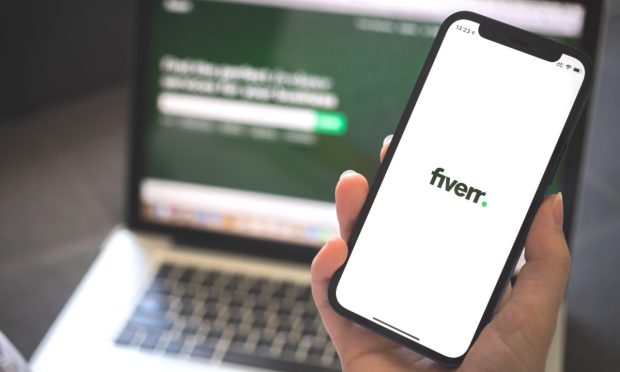Fiverr CEO Says Pandemic Reshapes Freelancing to Benefit of Workers and Employers

With dozens of job sites to click on, unprecedented digital connectivity and economic upheaval spurring two-sided demand for low commitment careers, you could say the pandemic has been a perfect storm for the freelance economy.
Now 10 months — and counting — into COVID-19 disruptions, a labor trend that was born of necessity and viewed as something transitional has matured into what could be a permanent shift.
Through it all, Fiverr has had a front-row seat as it serves both the supply side and the demand side of the burgeoning freelance market, providing a platform that connects businesses of all sizes with skilled freelancers offering digital services. Since going public 26 months ago, Fiverr is now three times larger than its pre-pandemic self.
“There was a massive, massive tailwind since we took the company public, and the pandemic just accelerated everything because, in a sense, it just made the case for everything we’ve been preaching for 10 years,” Fiverr Founder and CEO Micha Kaufman told Karen Webster.
Empowering Freelancers
In August, Fiverr added to that momentum when it announced the launch of Seller Plus, a subscription-based loyalty program that helps freelancers take their business on the platform to the next level.
Read more: Fiverr Launches Subscription-Based Loyalty Program for Global Seller Community
The tools include added analytics features that show the seller which potential customers see their profile, how they respond, and whether changes in pricing, offering or time of delivery convert more leads to sales.
Another resource is a dedicated success manager who helps the subscribed freelancer navigate through the tools and provides personalized advice.
Subscribers can also access faster payment clearance. The standard time is 14 days; for those subscribed to Seller Plus, it’s seven days, and for a fee, the payment is instant. Sellers can get paid in several ways, including via PayPal, bank transfer or debit card.
“We’re seeing that those who are actually using it for a few months have seen an increase of anything between 25% and 50% in their business, which is incredible,” Kaufman said of the Seller Plus subscribers.
The Value of Freelancers
The new program helps attract and retain freelancers and employers who have already been coming to the platform.
On the supply side, at the beginning of the pandemic, Fiverr saw an increase in the quality and professionalism of the freelancers who were joining the platform. Freelancers who had been successful offline suddenly found that avenue closed during lockdowns.
“This was a catalyst to try online platforms, and they came to us,” Kaufman said.
These well-established freelancers brought to Fiverr their high level of professionalism and great sense of service.
On the demand side, during the pandemic, larger businesses have realized the value of freelancers. When teams started working remotely, and it worked, businesses saw that they could hire freelancers who would work remotely too. With the freelancers, companies can scale up or scale down as needed.
Businesses have also seen that by hiring freelancers, they can avoid the problems many have faced during the “Great Resignation” that has seen 4 million workers resign in April and 3.9 in June or July. Freelancers don’t resign.
“When you think about the resilience of your business, you’re based on talent that is there whenever you need it,” Kaufman noted.
The pandemic, lockdowns and rise of remote work have led businesses and freelancers alike to view many things differently.
“Because you have most of your team remote, you can’t actually police their time, which means that really, the concept of 9-to-5 is dead, and people are more focused on output rather than time,” Kaufman said.
A Completely Different Mindset
That, he said, has given a boost to the concept of Fiverr. The company has been growing the number of categories of freelance work it serves, connecting sellers to buyers, and has localized its offerings in 10 countries.
The company had slightly less than 300 categories when it went public two years ago; today it has well over 550. The categories cross eight verticals, including graphic design, digital marketing, programming, video and animation.
In addition, it serves sellers in 160 countries and has been localizing. When the company went public, its site was English only and dollar only; today it is localized in 10 countries and six currencies.
Kaufman reported that it used to be that businesses planned to hire a freelancer for a given period of time; now they bring one in to complete a project.
“This, to me, is a larger revolution than any of the other things, like work-life balance and all of that,” he said. “It’s just a completely different mindset.”
